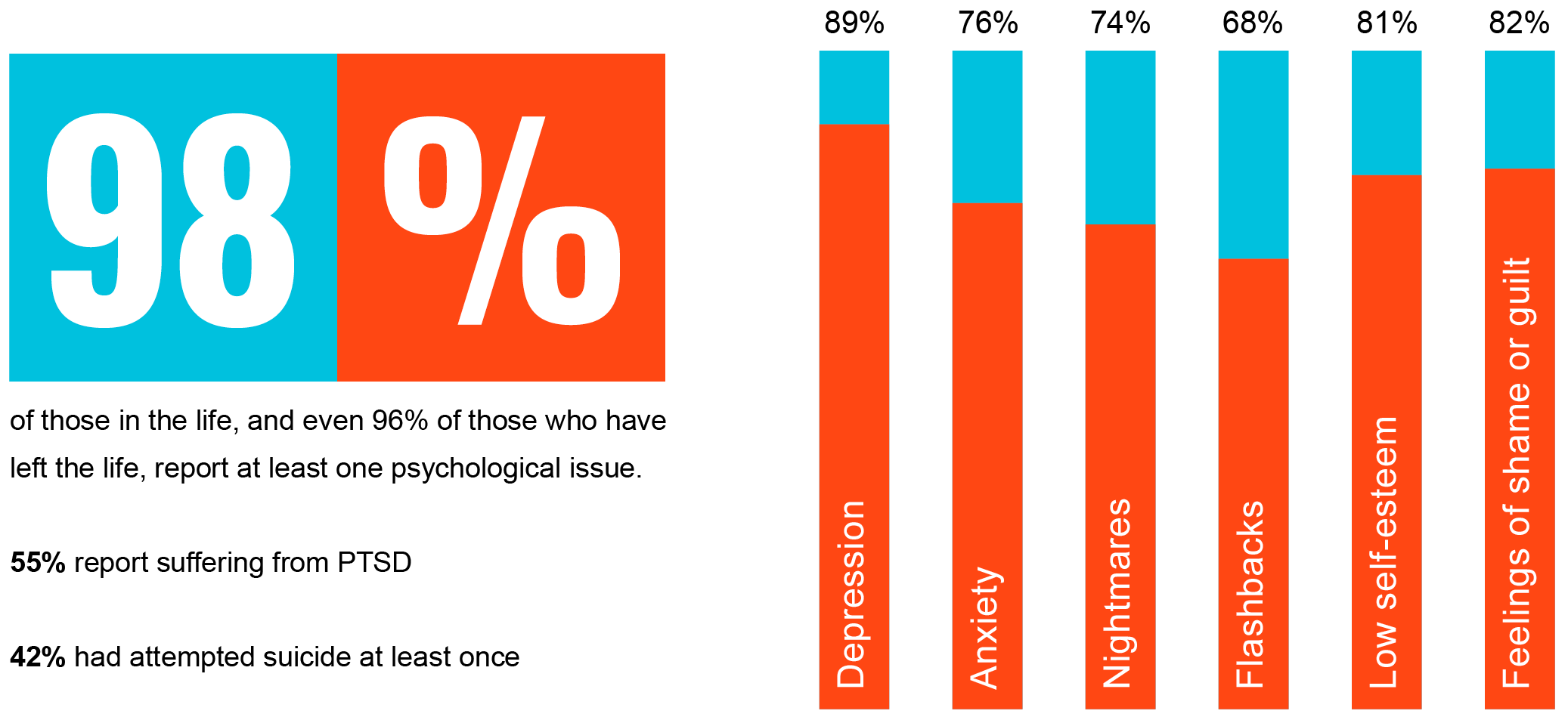Every day in America, people
are being bought and sold.
And every dollar of profit is fueled by human pain.
Every day in America, tens of thousands of people are trafficked and sexually exploited. Millions more are bought and sold worldwide. The global sex trade is a 120 billion dollar on- and offline industry, where every dollar of profit is fueled by human pain.
This isn’t just a tragedy, it’s a form of modern-day slavery. From the runaway teen coerced into prostitution by someone they believe to be a boyfriend, to the undocumented person stripped of their passport and held against their will, to the economically vulnerable person “working” the street or at an illicit massage business, exploitation takes many forms. The constant? The damage done to those who have been bought, sold, or exploited, and the degree to which economically or socially vulnerable populations are targeted by pimps, traffickers and johns.
The number of human trafficking contacts received by the National Human Trafficking Hotline in 2018.
cases of human trafficking were identified in 2018. 78% were sex trafficking cases.
11-15 years old is the average age of entry into prostitution found in most U.S. research studies.
of prostituted women and girls are survivors of childhood sexual abuse.
Gender, racial and income inequality
fuel the sex trade.
The vast majority of those in prostitution entered the sex trade before their 15th birthday, often coming from abusive or neglectful homes. In most cases their lives have been affected by poverty, homelessness and/or failures in the foster care system. Most experience additional violence once they enter the sex trade, often at the hands of traffickers, pimps or johns. And women and girls of color, as well as transgender persons, are especially vulnerable to sexual exploitation. Put another way, human trafficking and sexual exploitation are human rights issues fueled by gender, racial and income inequalities. And the vast majority of those in the sex trade did not enter it by choice.


